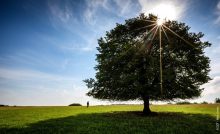 Recognising an increased demand for outdoor experiences this summer among visitors from the GCC, the German National Tourist Board (GNTB) is debuting the brand-new Embrace German Nature campaign that focuses on highlighting sustainable, open-air activities.
Recognising an increased demand for outdoor experiences this summer among visitors from the GCC, the German National Tourist Board (GNTB) is debuting the brand-new Embrace German Nature campaign that focuses on highlighting sustainable, open-air activities.
Germany is home to more than 130 protected natural landscapes, including a plethora of stunning forests, lakes, valleys, and hiking and cycling trails just waiting to be explored. It also boasts three UNESCO World Natural Heritage Sites, 16 UNESCO biosphere reserves, 16 national parks, and 106 nature reserves.
“We understand that GCC travellers are keen to visit countries that possess ideal summer climates with a wide range of things to do,” said Yamina Sofo, director of sales and marketing at the German National Tourist Office (GNTO), the regional office of GNTB. “Germany’s diverse selection of outdoor activities ensures something for everyone, from hiking trails to relaxing spa towns. Our Embrace German Nature campaign will improve access to and information about these opportunities even further, in a sustainable way.”
Four unique picks that fit the campaign are:
Arnsberg Forest Nature Park
Covering a total area of 482 square kilometers between the Möhne and Ruhr Rivers, the Arnsberg Forest Nature Park is sighted as one of the beautiful recreation lands in the Ruhr area. Nature lovers can enjoy the pristine mountain landscapes complete with springs, branching brooks and dense forests.
Spreewald Biosphere Reserve
For water lovers, this UNESCO biosphere reserve is shaped around the river Spree, which was formed during the last ice age. Visitors can enjoy the 276km of river via ‘punting boats’, a flat-bottomed boat with a square-cut bow. Still used to this day by local fishers, the surrounding area is home to more than 6,000 different types of animals, including fire-bellied toads, beavers, and otters.
Hainich National Park
Despite being Germany’s second-smallest park, Hainich National Park is packed full of things for outdoor adventure fans to enjoy. Located in Bad Langensalza, the national park has the largest contiguous deciduous forest in the country. A UNESCO World Heritage Site, the park is home to a unique range of landscapes, flora, fauna, and fungi throughout the entire space.
Wadden Sea
Another one of Germany’s many UNESCO World Heritage Sites, Wadden Sea is the largest unbroken system of intertidal sand and mud flats in the world. Home to a wide range of habitats, including marine mammals, fish, and migratory birds, Wadden Sea is spread across three countries and has been a subject for many famous writers and artists, such as Heinrich Heine and Emil Nolde.
 Tourism Breaking News
Tourism Breaking News


